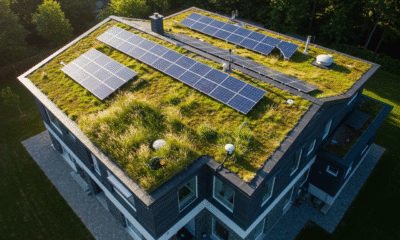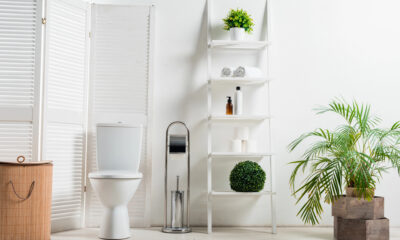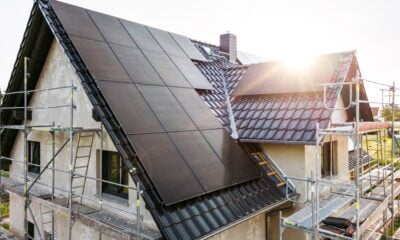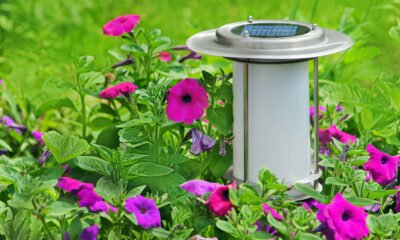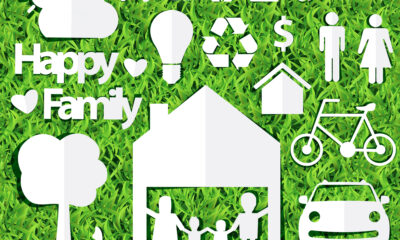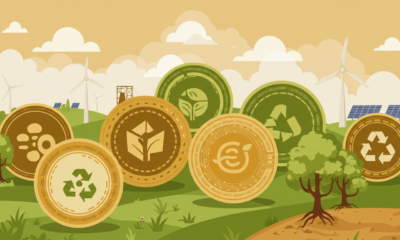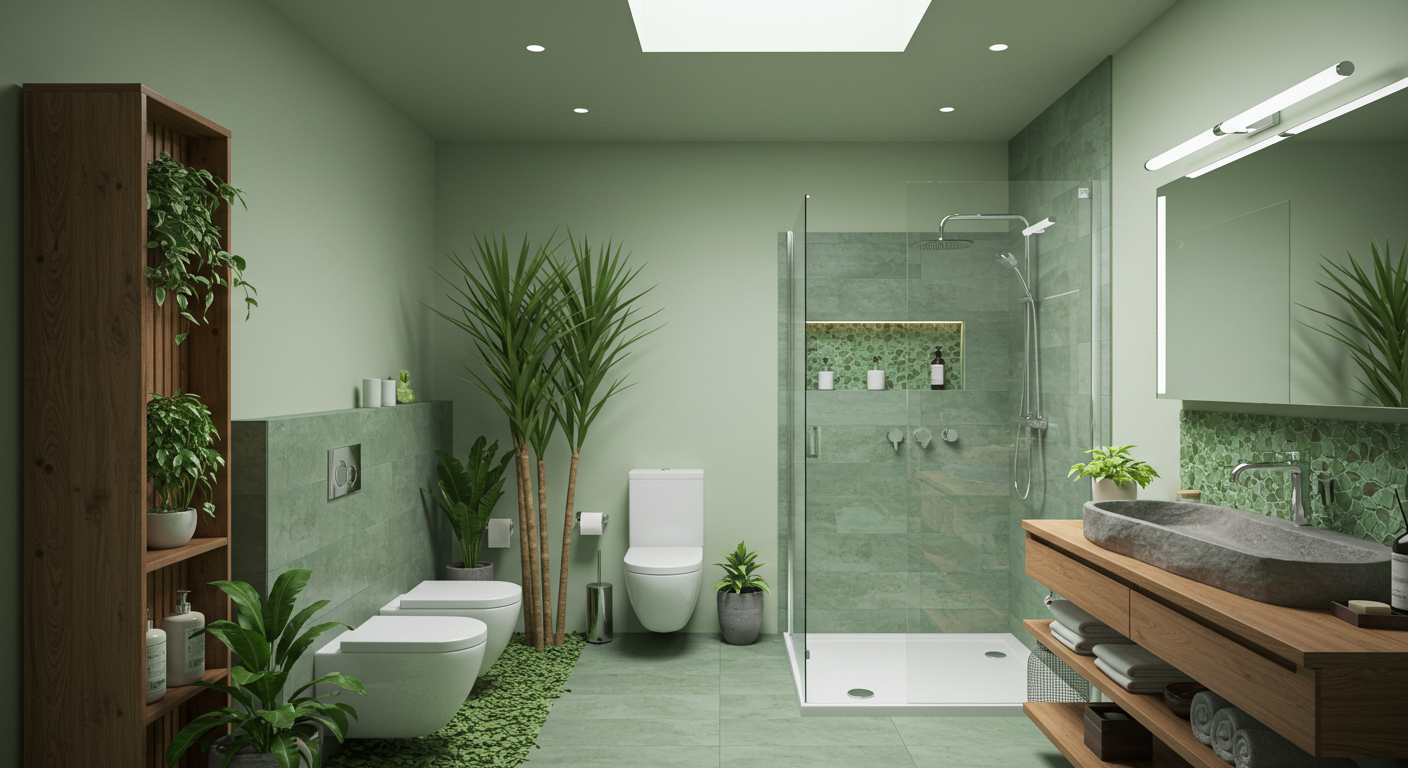
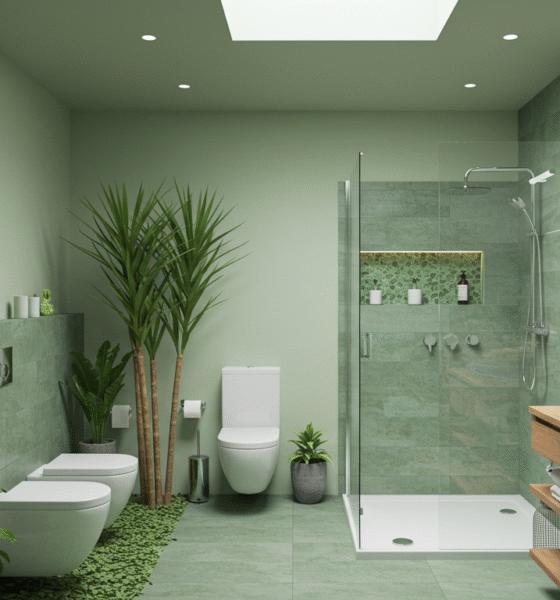
Environment
Eco-Friendly Bathroom Upgrades That Save Resources
We have talked about some of the major things that you can do to renovate your home as an eco-friendly consumer. You will need to take this into consideration when you are worried about making a new bathroom.
Green bathroom remodeling is growing more and more into being more than a design trend—it’s a choice that reflects changing values and priorities. Homeowners all across the country want to reduce waste, lower water use, and avoid materials that cause pollution. One survey found that 70% of individuals indicated they are already or are planning to make their homes more sustainable. This change is not only a matter of personal values, but also has long-term financial payoffs.
As awareness grows, so does demand. In 2019, 38.5% of U.S. consumers said they had purchased green or eco-friendly home improvement products in the previous year. An additional 20% weren’t even sure if they had done so, pointing to an expanding market for additional labeling and education regarding such products. From recycled tile to low-flow fixtures, there are more choices than ever for those remodeling with a lighter footprint in mind.
There are also economic incentives. Homeowners who make qualifying energy-efficient upgrades after January 1, 2023, can receive a tax credit of up to $3,200. And Melissa Dittmann Tracey of the National Association of realtors writes that 17% of REALTORS® reported that homes with green upgrades—those that increase indoor air quality, water efficiency, and the overall lifespan of the building—receive higher offers than comparable homes without the upgrades.
“Energy-efficient home upgrades could help homeowners cut their annual energy bills in half while also reducing their home’s carbon footprint. But even though consumers are showing a greater interest in sustainability, nearly a third say they think green remodeling projects are too expensive, according to a survey conducted by Thumbtack, a home services website, and Rewiring America, an electrification nonprofit. Another 31% say they don’t know where to begin when considering green upgrades,” Tracey says.
When it comes to bathroom remodeling, even small alterations can bring both personal satisfaction and real returns.
As we continue to embrace more sustainable lifestyles, the importance of eco-conscious choices in our homes has never been more apparent. While the kitchen often gets the spotlight in green living conversations, the bathroom—a space notorious for high water and energy consumption—is equally vital in the push toward sustainability.
The average bathroom has significant room for improvement, from long showers to wasteful products and outdated fixtures. Fortunately, eco-friendly bathroom renovations can create beautiful, functional spaces that help protect the environment and reduce utility bills.
Whether you’re planning a full-scale remodel or simply want to make greener decisions, this guide will walk you through the key principles and practical areas to focus on for a truly sustainable bathroom.
The Overarching Sustainable Bathroom Design Principles To Follow
Before diving into fixtures and finishes, it’s important to understand the foundational principles that define eco-friendly bathroom design. These guiding ideas help ensure that your renovation supports environmental well-being, enhances efficiency, and promotes a healthier lifestyle.
Minimize Environmental Impact
Start by selecting materials that are both durable and low-impact. Natural stone, solid wood, and ceramic tiles last for decades and reduce the need for frequent replacements. Additionally, opt for materials that require minimal processing or come from sustainable sources. Recycled and repurposed items—such as reclaimed wood vanities or tiles made from post-consumer waste—offer a unique aesthetic while keeping waste out of landfills.
Prioritize Water Conservation
Bathrooms are responsible for a significant share of household water use. Upgrading to low-flow showerheads, water-efficient faucets, and dual-flush or smart toilets can drastically reduce daily consumption without sacrificing comfort. Simple behavioural changes, such as turning off the tap while brushing your teeth or timing showers, also make a big difference.
Boost Energy Efficiency
From heating water to powering lights, bathrooms can be energy-intensive. Energy-saving solutions like LED lighting, motion-activated switches, and solar water heaters can reduce electricity usage while creating a more sustainable space. Insulating your bathroom and using efficient ventilation systems also helps reduce energy waste.
Embrace Natural Elements
Biophilic design – an approach incorporating natural light, plants, and organic materials—enhances well-being and strengthens your connection to nature. Consider installing larger windows or skylights to let in daylight, adding potted plants for improved air quality, and choosing finishes that reflect earthy tones and textures.
Reduce Waste
An eco-friendly renovation isn’t just about what you add but also what you avoid. Adhering to the three Rs—Reduce, Reuse, Recycle—throughout your project helps minimize construction waste. Donate old fixtures, reuse materials where possible, and choose recyclable products to keep your renovation landfill-light.
10 Key Areas for Eco-Friendly Bathroom Remodel & Renovation Ideas
With your guiding principles in place, let’s explore the specific areas where you can apply these concepts. These ten focal points will help you achieve a bathroom that’s as kind to the planet as it is stylish and comfortable.
#1. Use Sustainable Bathroom Products & Materials
Eco-Friendly Materials – Choose materials that have a minimal environmental footprint. Bamboo, cork, recycled glass, and responsibly sourced wood are excellent options that look beautiful and stand up to daily use.
Opt for Recycled and Repurposed Materials – Consider giving a second life to vintage vanities, reclaimed wood shelves, or recycled metal hardware. These pieces add character while reducing the demand for new resources.
Use Eco-Friendly Options – Ceramic, bamboo, and reclaimed wood are popular for eco-conscious renovations. They’re renewable, biodegradable, and often less toxic than synthetic alternatives.
Choose Durable, Long-Lasting Products – Invest in quality materials like natural stone, porcelain tiles, and solid wood cabinetry. These choices are built to last and reduce the frequency of replacements over time.
#2. Choose Water-Saving Fixtures
Low-Flow Showerheads – Modern low-flow showerheads can reduce water usage by up to 50% without compromising water pressure or comfort.
Water-Efficient Faucets – Aerated faucets mix air with water, reducing flow while maintaining a strong stream. Look for models with WaterSense certification.
Dual-Flush Toilets – These toilets offer two flush options—one for liquid waste and another for solids—saving thousands of gallons of water annually.
Smart Toilets – Equipped with sensors and programmable settings, smart toilets use only the water needed and often include self-cleaning functions for added hygiene.
#3. Pick Energy-Efficient Lighting
LED Bulbs – LEDs consume significantly less energy than traditional bulbs and last much longer, making them a no-brainer for eco renovations.
Maximize Natural Light – Skylights, transom windows, or solar tubes can brighten your space during the day and reduce dependence on electric lighting.
Motion Sensors – Installing motion-sensor switches ensures that lights turn off automatically when the room is unoccupied, reducing unnecessary energy use.
#4. Use Ventilation Systems
Cross-Ventilation – Position windows or vents on opposite walls to encourage natural airflow and reduce the need for mechanical ventilation.
High-Quality Exhaust Fans – An efficient exhaust fan removes humidity quickly, preventing mould growth and preserving bathroom materials.
#5. Use Non-Toxic Paint & Finishes
Low or Zero-VOC Paints – Traditional paints release volatile organic compounds (VOCs), which can harm indoor air quality. Choose low- or zero-VOC options for a safer environment.
Non-Toxic Sealants – Sealants and adhesives can also contain harmful chemicals. Opt for green-certified alternatives to keep your air clean and your conscience clear.
#6. Use Natural and Recycled Floor & Wall Coverings
Recycled Tiles – Glass, ceramic, and even rubber tiles made from recycled content add flair while reducing waste.
Sustainable Alternatives – Materials like cork and linoleum are renewable, biodegradable, and naturally resistant to moisture and mould.
Natural Stone – While more energy-intensive to extract, natural stone is highly durable and often lasts a lifetime, making it a worthwhile investment.
#7. Choose Sustainable Vanities & Cabinets
Recycled or Sustainably Sourced Wood – Look for FSC-certified wood products or reclaimed pieces that reduce deforestation and promote responsible forestry.
Recycled Materials – Cabinets made from recycled metal or composite materials offer a modern look and reduce demand for virgin materials.
#8. Implement Water Management Systems
Greywater Systems – These systems reuse gently used water (from sinks and showers) for toilet flushing or irrigation, reducing overall consumption.
Rainwater Harvesting Systems – Collect and store rainwater for flushing toilets or watering plants. It’s an excellent way to reduce reliance on municipal water supplies.
#9. Buy Energy-Saving Appliances
Solar Water Heaters – These systems harness the sun’s energy to heat your water, drastically cutting down on electricity or gas usage.
#10. Technology & Design Inspiration for Eco-Friendly Bathrooms
Smart Bathroom Technology – Smart systems can track water and energy usage, detect leaks, and even recommend usage improvements—helping you stay accountable and efficient. Smart technology can monitor your water usage, track energy consumption, and help you reduce both.
Minimalist Aesthetics – A clutter-free bathroom with purposeful design minimizes material use while maximizing functionality and visual appeal.
Spa-Inspired Retreat – Natural textures, soft lighting, and earthy tones create a calming environment that aligns with sustainable, wellness-focused design.
Biophilic Design
Bringing nature indoors through plant life, natural light, and organic materials enhances mental well-being and strengthens environmental connection.
Industrial Chic – This style celebrates raw, recycled materials like concrete, metal, and exposed pipes—perfect for a sustainable and modern look.
Conclusion
Eco-friendly bathroom renovations are not just good for the planet—they’re smart, stylish, cost-effective and increasingly accessible. By adopting sustainable principles, choosing low-impact materials, and investing in energy- and water-efficient solutions, you can create a beautiful space that aligns with your environmental values. Start your journey toward a greener home today—your bathroom is the perfect place to begin.


 Environment10 months ago
Environment10 months agoAre Polymer Banknotes: an Eco-Friendly Trend or a Groundswell?

 Environment11 months ago
Environment11 months agoEco-Friendly Home Improvements: Top 7 Upgrades for 2025

 Features9 months ago
Features9 months agoEco-Friendly Cryptocurrencies: Sustainable Investment Choices

 Features10 months ago
Features10 months agoEco-Friendly Crypto Traders Must Find the Right Exchange
